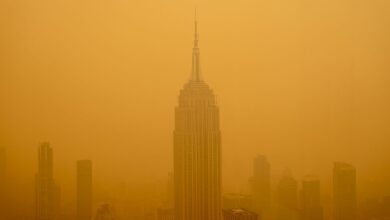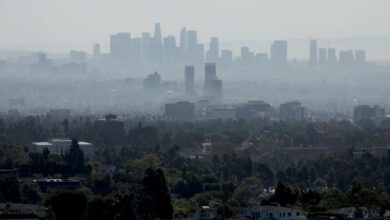For almost two weeks now Egypt has been gripped by a rapidly changing political landscape, triggered by protesters taking to the streets on January 25 in what has been dubbed a youth-led revolution.
The streets of Cairo, and other major cities throughout the country, have been overwhelmed by an unprecedented number of citizens taking to the streets in protest.
But the political landscape is not the only change to be noticed. The escalation of these protests led to a halt of the country’s economy in the past few days. With factories shutting down, the stock market suspended and Egypt’s workforce on hold as the revolution continues unabated, Cairo in particular witnessed a dramatic change in its skyline. For the first time in ages Cairenes were greeted with clean air and clear skies each morning.
Air pollution has been a serious issue for Cairenes in recent years. Reports by the World Health Organization (WHO) indicate that the air pollution in downtown Cairo alone is between 10-100 times what is considered to be a safe limit.
Cairo is in the company of other cities like Mexico City, Bangkok, San Paulo and Delhi, considered to be among the worst in the world in terms of air pollution.
Of particular concern is the fact that the dispersion factor–meaning how fast the pollutants in the air are dispersed–is low, due to a combination of meteorological factors, thus increasing the severity of our exposure to air pollution as evidenced in particular during the yearly "Black Cloud" season. During this season the burning of rice straw by farmers serves to compound the air with pollution at a time when the dispersion factor is at its lowest due to thermal inversion, whereby a warm air cap forms over Cairo. This air cap neither rises nor dissipates, trapping the air pollution, rather than allowing it to disperse.
Another study conducted by the World Health Organisation (WHO) claimed that the average Cairene ingests more than 20 times the acceptable level of air pollution per day. A 2002 World Bank report estimates that pollution causes USD 2.42 billion worth of environmental damage each year, about five percent of Egypt's annual Gross Domestic Product (GDP).
On a normal day the main sources of air pollution in Cairo include its 12,000 factories spread throughout various areas in and around the city, alongside approximately four million cars circulating its streets daily.
With the country’s economy on hold the past few days these sources of pollution have been halted, giving people a breath of fresh air to their enjoyment.
As the authorities have been attempting to restore a sense of normality to the capital, with banks opening for the first time for a week on Sunday, and workers gradually returning to work, it seems that the clean air and blue skies of Cairo will, sadly, be a short-lived phenomena.




